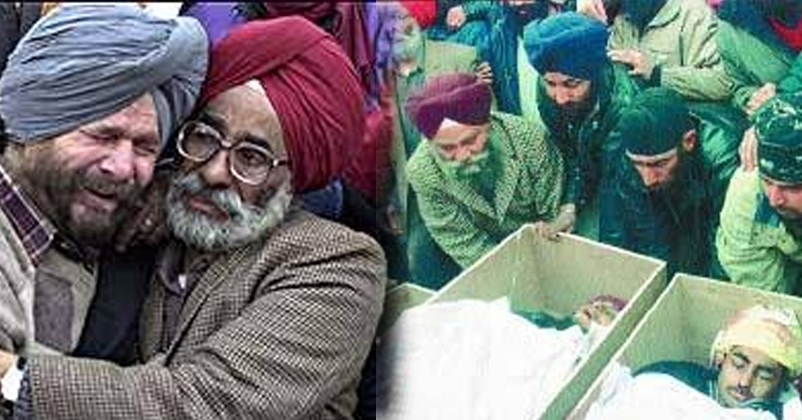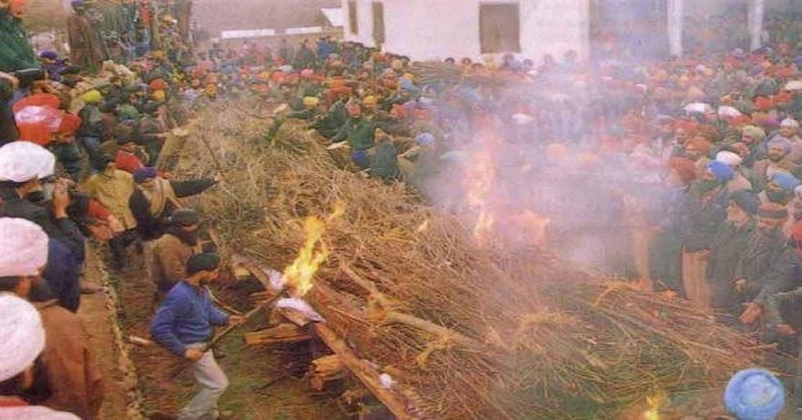February 2001, remembering Massacre of Kashmiri Sikhs in the heart of Srinagar
| 04-Feb-2020 |

For over a decade, communal attacks in the valley by armed intruders and the terrorists have been quite common. In the course of its history, the state saw massacres and even witnessed the targeting and killings of innocent lives and particular communities.
Feb 3rd, 2001 had witnessed one such massacre in Srinagar’s Mahjoor Nagar. 3 terrorists entered the only Sikh majority street of Srinagar, Mehjoor nagar. It was a busy day; children were playing in the street. 2 terrorists fired indiscriminately on Sikh men with automatic guns while third one was riding the bike. Till people could understand anything, terrorists had fled away. 6 Innocent Sikh men were brutally killed and nearly a dozen were seriously injured, including two women.
As the news of killings reached the city on Feb 4, the minor community of the valley came out on streets in large numbers mourning the death of their people and also questioning it. An unknown al-Qasim, was believed to be a front organization, possibly for the Lashkar-e-Toiba or a breakaway unit of the Hizbul Mujahideen behind this massacre.
Soon after the incident, curfew was imposed in and around Srinagar while additional forces were deployed in Sikh dominated pockets. The victims were cremated at a Gurudwara with family and friends in attendance, but agitated community members took out angry demonstrations all over the state.

The anger was piling up because Sikhs had been under continuous assault from a year. In March 2000, Chattisinghpora had seen a larger carnage as a result of killings of 35 Sikhs by the Lashkar-e-Taiba terrorists. In response to such communal massacres by terrorists, the community's anger got sharper. Out of thousands of people who got on the streets to protest against the Mehjoor Nagar massacre, a Sikh protestor was even shot dead by the forces and 3 others were injured in the course of a street battle.
Targeting of Kashmiri Sikhs
The Special Operations Group had been active then to eliminate terrorists despite continued offensive efforts by the Islamic Jehadi groups and their supporters. However, the visible presence of Sikhs in the Army, the BSF and the Central Reserve Police Force distressed some Islamic groups. At the time of the Chattisinghpora massacre too, the State DGP, the Inspector-General of Police in charge of operations, and several Superintendents of Police of the SOG were Sikhs, it was a factor that fed the consciousness of those who carried out the killings.
Also, the State government openly opposed any probability of ceasefire by the then Prime Minister Atal Bihari Vajpayee whose main intent was to end the violence in the state of Jammu and Kashmir. Meanwhile, the Jammu and Kashmir unit of the Shiromani Akali Dal too had asked for Sikh community’s equal involvement in any dialogue concerning the state and its future. For the Sikhs who had settled in the State after 1947, the local Sikh leaders Gurdev Singh Ishar and Sudershan Singh Wazir even called for reservation in the State Assembly, on the grounds that their co-religionists were the original inhabitants of the areas of Jammu and Kashmir that was now occupied by Pakistan.
The Peace process and the pressure
The Majhoor Nagar massacre was a result of the offensive approach towards a minority group which was peace favoring in the valley. The attack had taken place soon after an official dialogue between the then Prime Minister Mr. Atal Bihari Vajpayee and his Pakistani counterpart Gen. Parvez Musharraff over ceasefire. Under immense pressure and lack of cooperation by the local administration too, the then Prime Minister of India, Mr. Vajpayee did not want to leave the state unattended, but he probably didn’t sense such internal obstacles either while considering the cross-border peace process favoring the valley.